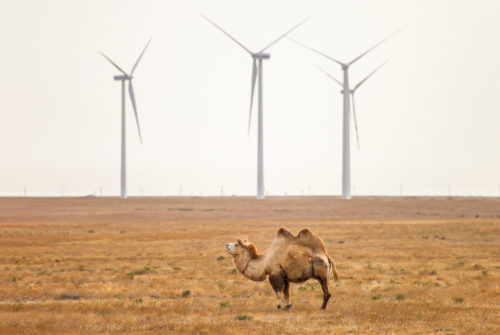
A Utility Investment Plan Is Like a Camel
How reimagining resource planning can help regulators avoid breaking the camel’s back.
Camels can carry an impressive 440 pounds, but even these powerful desert creatures have their limits. Despite their strength, proverbially, the last straw added to a load can break a camel’s back.
Utility resource plans have more in common with camels than most regulators realize. They carry a lot of weight — over the next three years, utilities serving at least 40 percent of US total electricity sales and over 90 million customers will file integrated resource plans (IRPs). Utilities typically recommend in their plans a portfolio of resources that they believe can meet the grid’s needs for the next 10–30 years in a manner that is affordable, reliable, and safe. Even when utilities and regulators are not bound to the final recommended portfolio, if conducted effectively, the IRP provides critical direction for the resource mix, a deeper understanding of the needs and aspirations of households and communities a utility serves, and strategies to respond to future opportunities and risks.
Today, resource planning is being asked to carry even more straw. IRPs are seen as an important place to integrate a growing set of policy objectives, ensuring that utilities can deliver carbon reductions, energy equity, and economic development, in addition to reliability, affordability, and safety.
But how much can we pile on before the process breaks? Now is a critical time for regulators and utilities to consider how to modernize planning processes in a way that avoids breaking the camel’s back. RMI’s new report, Reimagining Resource Planning, offers an overview of the state of planning today, highlights where leaders have implemented changes to continuously improve their processes, and challenges regulators and utilities to push the boundaries further.
Planning for Tomorrow’s Grid with Yesterday’s Plans
Planning the electricity system has never been more complex. Utilities are simultaneously facing unprecedented weather events, retiring aging high-emissions resources, and considering a wider array of resource options including creative demand response solutions — while trying to ensure electricity is reliable, affordable, and safe. On top of these factors, many utilities and regulators are updating their processes to achieve new objectives such as energy equity, local economic development, and emissions reductions.
To remain a powerful tool for making timely decisions in the face of this complexity, IRPs need to retain and continue to improve on three core qualities:
- Trusted — The IRP must be transparent and well vetted, with stakeholder input.
- Comprehensive — The IRP should accurately represent the costs, capabilities, system impacts, and values of the resources that might be available within the planning time horizon, and should consider actions across the transmission and distribution systems as portfolio options.
- Aligned — It should be clear how the plan evaluates options to meet traditional planning requirements such as reliability, affordability, and safety as well as state and federal policies and customer priorities such as reducing emissions and advancing environmental justice.
Learn from Leaders Today
Utilities and regulators can learn from approaches that have been tested in other states. Drawing from the more than 50 examples documented in Reimagining Resource Planning, regulators, utilities, and stakeholders can move quickly to make changes that enhance these three qualities of an IRP. For example:
Trusted: ln New Mexico, utilities must publish specific cost data in their resource plan, adding transparency needed to evaluate the plan. In Washington, utilities are required to document how they incorporated input or provide an explanation for why they did not incorporate input, giving stakeholders visibility into how their input was used.
Comprehensive: In Indiana, utilities have updated their approaches to modeling demand-side resources in a way that is more consistent and comparable to supply-side resources. In Oregon, planning guidelines suggest that transmission should be considered as a resource option in utility planning.
Aligned: In California, utilities are identifying the disadvantaged communities they serve in their long-term plans to evaluate air quality and access to utility programs in those communities. In Colorado, utilities, in partnership with the state energy office, have developed an approach to estimate the emissions of each planning portfolio and assess alignment with the state’s greenhouse gas reduction targets.
Navigating Complexity without Breaking the Camel’s Back
Implementing a number of these incremental changes to ensure IRPs are trusted, comprehensive, and aligned comes with risk, despite the significant potential upside. Resource planning is intensive today — plans can take more than a year to develop and often require significant data, complex modeling, external stakeholder engagement, and coordination across multiple departments. Piling on enhancements might break the camel’s back.
Reimagining Resource Planning offers a structured set of questions for regulators to consider as they implement changes to enhance planning without breaking the process:
- Purpose: What are the goals for the electricity system in the context of broader policy objectives, and how should plans be evaluated with respect to those goals?
- Scope: What should be included in IRPs, and what might be included in separate, yet coordinated processes?
- Roles: Who should be involved in developing IRPs?
- Tools: How can we use analytical tools and engagement processes to best support the outcomes of planning?
Careful changes in these four areas can help IRPs thrive under the weight of new expectations. Reimagining Resource Planning is an invitation for regulators and utilities to use these questions, learn from leaders, and share their results — all without breaking the camel’s back.